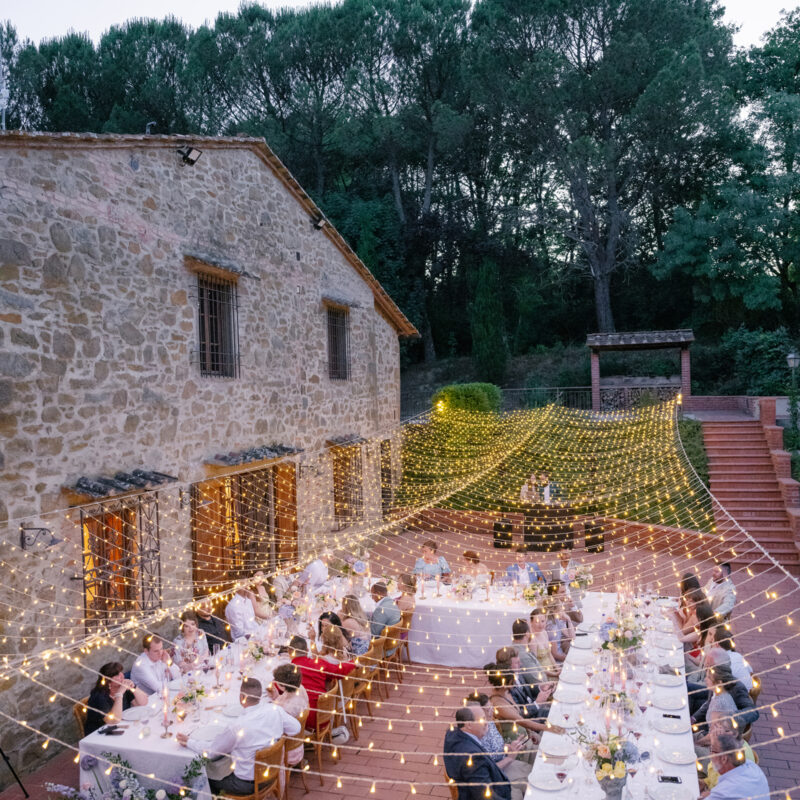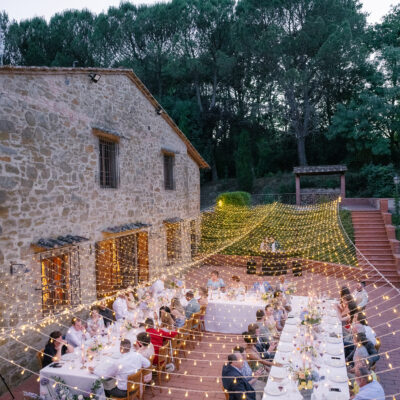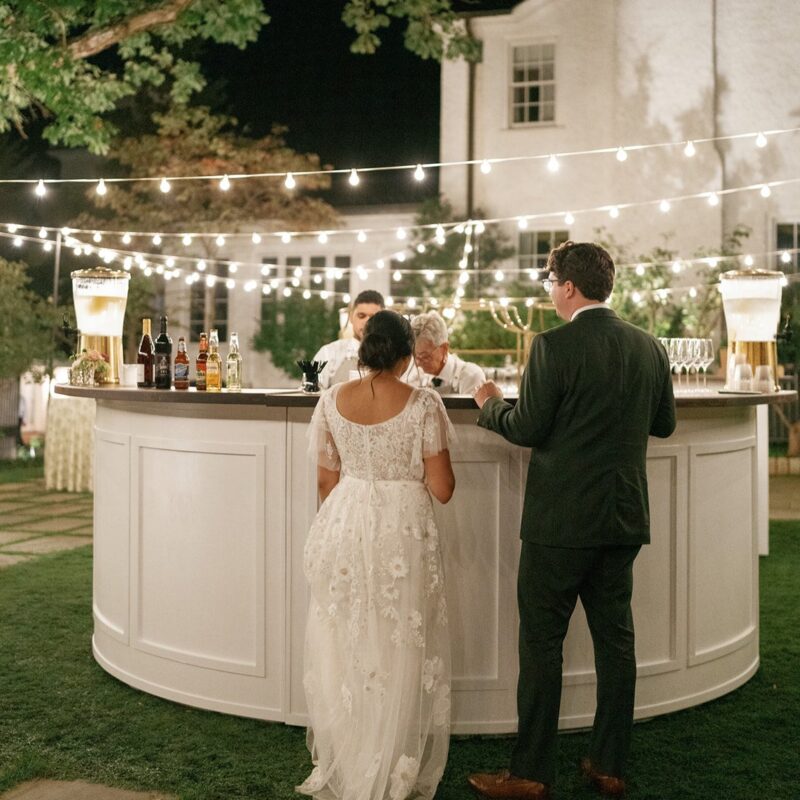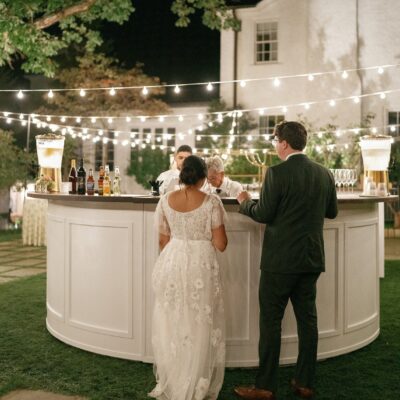The house enjoys an extraordinary location, overlooking miles of Albemarle countryside from a high mountainside perch. Throughout the day the sun makes its crossing from east to west across a wide expanse of sky, while fields and woods unroll below for what seems like forever. When the present owners came here in 1996, they loved the vista, but the sense of space was sometimes overwhelming.
“There was nothing around the house,” says the owner—no landscaping, and very little flat ground to invite a sense of dwelling outdoors. Rather, the view seemed to begin exactly where the house stopped. The owners wanted help creating more of a transition between the two—a human-scaled intermediate zone—and they began by asking mason Charles McRaven to build a promontory enclosed by a stone wall.
Landscape designer Susan Viemeister joined the project in 2006, as the wall was being built. She saw her task as creating an outdoor living space, but knew that the garden wouldn’t “attempt to compete with the view or do anything about the view,” she says. Rather, it would be an “intimate space” where the colors and textures of trees and perennials could engage the eye at close range. The huge vista to the south would be balanced by the relatively nearby backdrop of forest on the north.
The owners wanted a patio for seating and grilling, which Viemeister positioned just outside the kitchen. She designed pathways made of bluestone stepping stones to connect the promontory, patio and porch. A small lawn would be given shape by a perennial garden, itself enclosed by the stone wall. “And we created breaks in the wall where you could walk through the garden and down the hill,” she says.

Visitors will find a perennial bed mixing winterberry holly, arbor vitae, yarrow, phlox, goldenrod and coneflower bordering the lawn. Photo: Bill Mauzy
Two young red oak trees were growing too close to the house and had to be moved further out with a tree spade. One of these now anchors the patio space, providing a “ceiling” of shade in the summer, and a place to hang birdfeeders in the winter.
“The perennials were chosen for late spring through fall interest,” says Viemeister—though, on a winter visit, there was actually still color to be found, in the form of winterberry holly and the various greens of the arborvitae, Skip laurel and boxwood that Viemeister likes to “weave through the garden.”
Forsythia just below the wall herald the spring; Cayuga viburnums provide fragrant spring blooms and, later, fall color. A perennial flower bed includes rudbeckia, yarrow, phlox, goldenrod and coneflower (whose seedheads the owner likes to leave in place for winter birds). Two dogwoods flank steps down to the hillside, while two Emerald arborvitae mark the entrance to the small promontory, just big enough for two chairs.
Oakleaf hydrangeas, garden juniper, Little Princess spirea and Birdsnest spruce are the year-round backdrop to the more fleeting appearances of dianthus, asters, lavender and Shasta daisy. Knockout roses climb a pergola added more recently by the clients.
Viemeister laid out the hardscape so that central axes of promontory and patio would unify the overall design. “I was using the patio to connect those dots, and using the garden to soften that,” she says. The bluestone patio is dry-laid in what Viemeister calls a “Charleston pattern”—stripes of stone in various widths—and she designed new steps from the porch to reach the ground level. The client places a number of planters for annuals around the patio and near the porch, adding even more color and texture.
The garden, now mature, is a lovely outdoor room that provides a detailed counterpoint to the magnificence of the southern view. As Viemeister says, “You can visit the view; you’re not intimidated by the view.”







